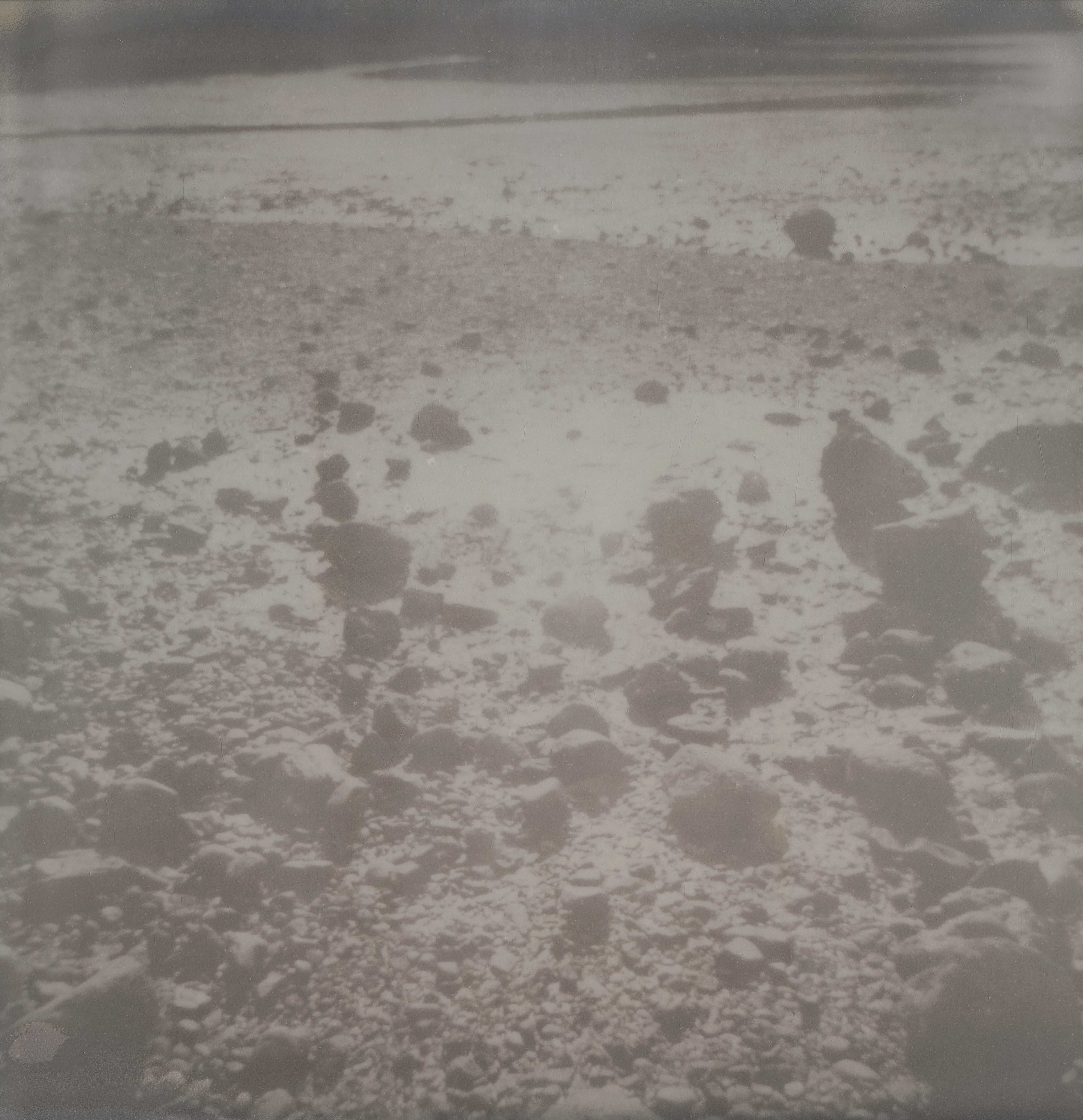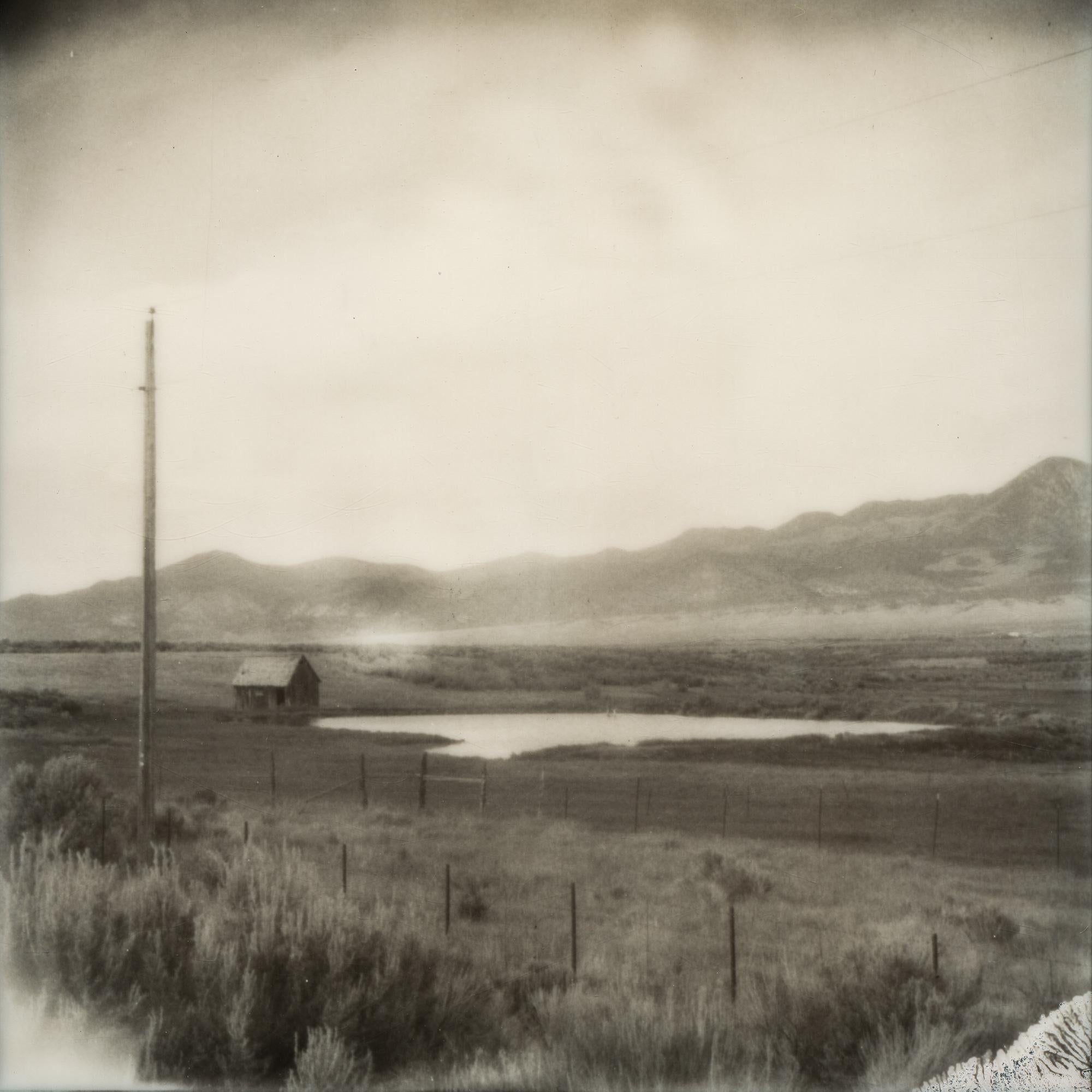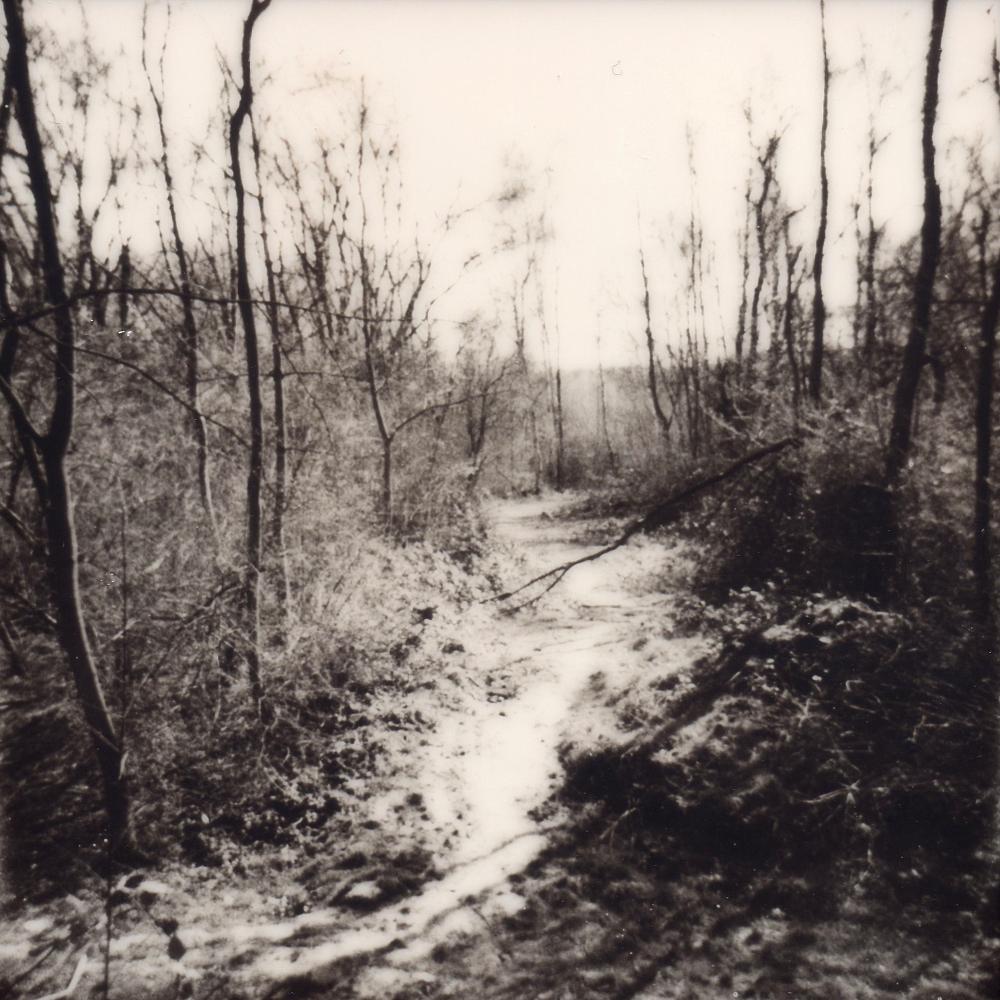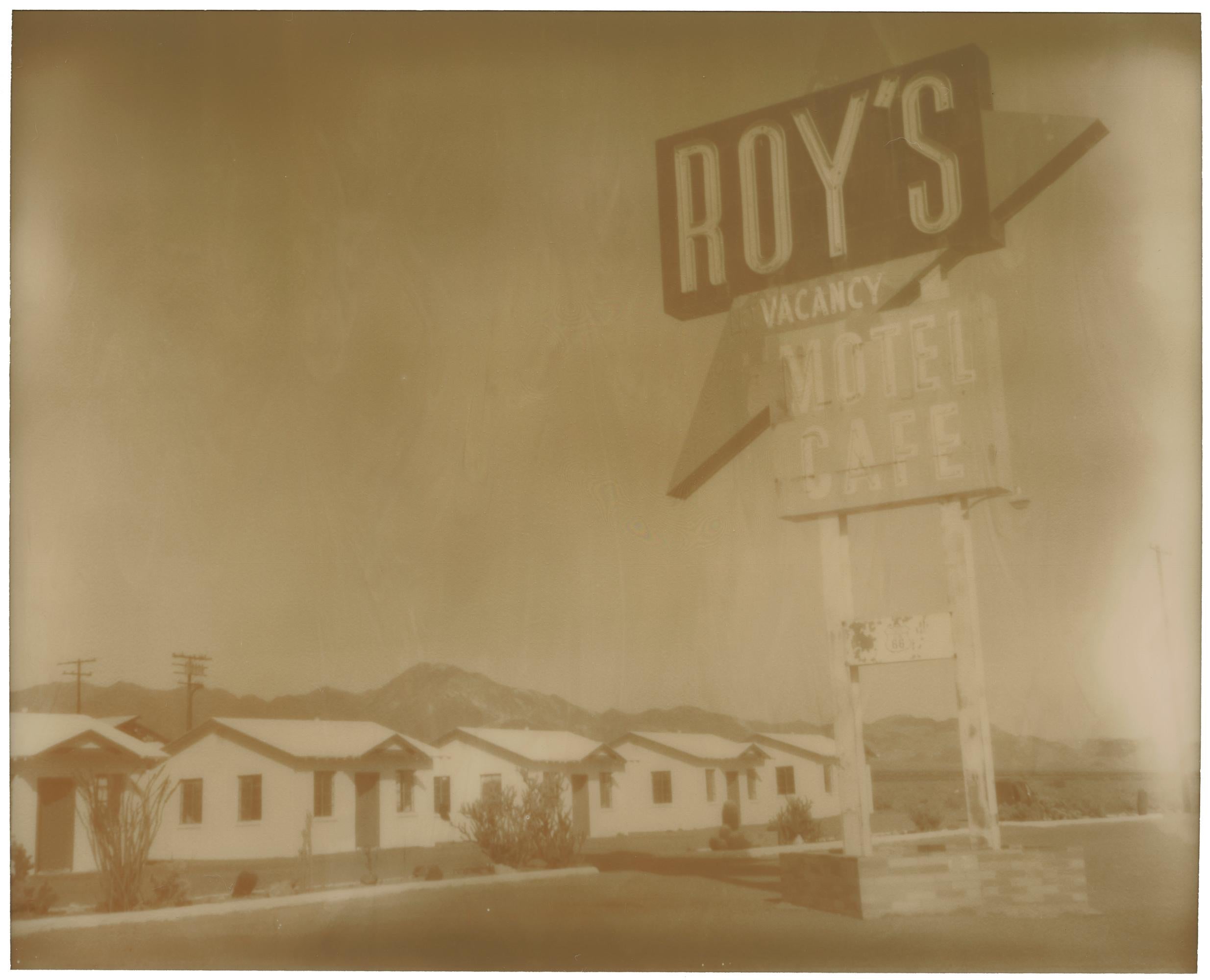Items Similar to Jordan (Wastelands) - Contemporary, 21st Century, Polaroid, Figurative
Want more images or videos?
Request additional images or videos from the seller
1 of 5
Stefanie SchneiderJordan (Wastelands) - Contemporary, 21st Century, Polaroid, Figurative2003
2003
About the Item
Jordan (Wastelands)
Edition 2/5, 57x56cm, 2003
Analog C-Print, hand-printed by the artist on Fuji Crystal Archive Paper,
based on a Polaroid.
Artist inventory Number 1176.02.
Signed on verso.
Mounted on Aluminum with matte UV-Protection.
Exhibited:
Wastelands, Städtische Galerie, Waldkraiburg, Germany (S) (2006) / Wastelands, Zephyr, Mannheim, Germany (S) (catalog) (2006) Wastelands, Kunstverein Recklinghausen, Germany (S) (2007)
Published in: WASTELANDS published by edition braus, Wachter Verlag, Heidelberg, 2006 (monograph)
Reality with the Tequila:
Stefanie Schneider’s Fertile Wasteland
by James Scarborough
“How much more than enough
for you for I for both of us darling?”
(E. E. Cummings)
Until he met her, his destiny was his own. Petty and inconsequential but still his own. He was cocksure and free, young and unaccountable, with dark hair and aquiline features. His expression was always pensive, a little troubled, but not of a maniacal sort. He was more bored than anything else. With a heart capable of violence.
Until she met him, she was pretty but unappreciated. Her soul had regis- tered no seismic activity. Dust bowl weary, she’d yet to see better days. A languorous body, a sweet face with eyes that could be kind if so inclined.
Until she met him, she had not been inclined.
It began when he met her. She was struck in an instant by his ennui. The sum of their meeting was greater than the imbroglios and chicaneries of their respective existences. He was struck by the blank slate look in her eyes. They walked, detached and focused on the immediate, obscenely unaware of pending change across a terrain of mountainous desert, their eyes downcast and world-weary, unable to account for the buoyant feeling in her heart. His hard-guy shtick went from potentiality to ruse. The gun was not a weapon but a prop, a way to pass time. Neither saw the dark clouds massing on the horizon.
They found themselves alone in the expanses of time, unaware of the calamity that percolated even as they posed like school kids for the pic- tures. Happiness brimmed in that wild terrain. Maybe things were begin- ning to look up.
That’s when the shooting started…
Stefanie Schneider assumes that our experience of lived reality (buying groceries, having a relationship with someone, driving a car) does not correspond to the actual nature of lived reality itself, that what we think of as reality is more like a margarita without the tequila.
Stefanie Schneider’s reality is reality with the tequila. She does not abol- ish concepts that orient us, cause and effect, time, plot, and story line, she just plays with them. She invites us to play with them, too. She offers us a hybrid reality, more amorphous than that with a conventional subject, verb, and predicate. Open-ended, this hybrid reality does not resolve itself. It frustrates anyone with pedestrian expectations but once we inebriate those expectations away, her work exhilarates us and even the hangover is good. An exploration of how she undermines our expectation of what we assume to be our lived reality, the reasons why she under- mines our expectations, and the end-result, as posited in this book, will show how she bursts open our apparatus of perception and acknowl- edges life’s fluidity, its density, its complexity. Its beauty.
She undermines expectations of our experience of reality with odd, other- worldly images and with startling and unexpected compressions and expansions of time and narrative sequence. The landscape seems familiar enough, scenes from the Old West: broad panoramic vistas with rolling hills dotted with trees and chaparral, dusty prairies with trees and shrubs and craggy rocks, close-up shots of trees. But they’re not familiar. These mis-en-scenes radiate an unsettling Picasso Blue Period glow or the intense celestial blue of the cafe skies that Van Gogh painted in the south of France. Yellow starbursts punctuate images as if seen through the viewfinder of a flying saucer. At the same time, objects appear both vintage and futuristic, the landscape of a post-apocalyptic world.
Landscapes change seemingly at random as do the seasons. Stefanie Schneider offers no indication of how time flows here, except that it con- ceivably turns in on itself and then goes its merry way. Time is a river whose source is a deep murky spring which blusters about with an occasional swirling eddy.
That Stefanie Schneider thwarts an easy reading is obvious but why does she do this? Since she will not countenance anything linear, logical, or sequential, and because she does not relish anything concrete and specific, she has to roil things up a bit. Nor does she seem comfortable with a book of images that is settled, discrete, and accountable. Instead she wants to create a panoply of anxious moments that refuse to settle down into any predetermined reading. She seeks to assemble the ele- ments, establish a provisional cosmology and then let each of us bring our own life experiences to bear on the enterprise. She unravels the paucity of a universe compromised by a matrix of either/or and replaces it with a kaleidoscopic neither/both cornucopia.
No fan of Descartes, she does not adhere to anything predicated on cogito ergo sum. No, the chance to present a universe of limitless iterations and utterances, open-ended, casualty-thwarting, intrigues her. She broaches a Heraclitan world: she shows that attempts to master, manage, and hoard time prove to be as elusive as a blind man trying to grab a salmon barehanded from a cold mountain stream. Even within the clear cut parameters of the Old West universe onto which she gloms, she shows that time is a bandit, that it is a mirage, that it is as unpredictable as it is indefinable and infinite. She coaxes us, scene by scene a slow- motion, out-ofsequence film clip, to agree with her that a running moat of lived reality easily overwhelms a castle of rationality.
Stefanie Schneider does not mount a demolition effort much less a de- construction one. Rather, she dismantles our expectations and sets about rebuilding not things but their connections anew. She is the mistress of the synapses. Indeed all these annoying ambiguities and irritating am- biances set the stage for a very particular certainty, one kernel of truth amidst these skewed and open-ended fields of inquiry. What connects all these images, in whatever order they might be presented1, is what I call an Augenblick, the mental distance between each page in whose ex- panse occurs the processing of shards of lived experience between these blinks of an eye that comprise the pages of Wastelands. During these innumerous Augenblicke, we take whatever shifts and turns that Stefanie Schneider throws at us, recalibrate our bearings, and then move on, at least until the next inevitable obstruction.
Irritating (and enlightening) as these shots may be, they’re nothing new. Rilke writes that, instead of trying to understand the quiddities of things, we should just be joyous at their mystery, just assume that they’re written in a lovely script that neither you nor anyone else can ever understand. Keats writes about being “awake forever in a sweet unrest,” although he’s talking about love. Stefanie Schneider makes us work for this idea of an Augenblick, but the result is worth it. The scenes and their sequencing dazzle us in a Borgesian Hall of Mirrors. Stefanie Schneider shows us that reality is anything but linear and user-friendly, but once one becomes accustomed to her enhanced dimension of space and time, we see the world in all its multifarious beauty and rapture. For that reason, Stefanie Schneider’s Augenblicke show us that reality may be a wasteland but it is as fertile as fertile can be.
1 I refer to Julio Cortazar’s novel, Hopscotch, in which he presents his story in a linear way, with consecutive chapters that follow a particular coherence. In a note at the beginning of the novel, he suggests an alternative reading via a new sequence of chapters. So instead of reading chapter 1 first, chapter 2 second, you read, say chapter 57 first, chapter 32 second, chapter 1 third and so on to form a new story. Similarly, Stefanie Schneider’s Wastelands offers a multitude of coherences.
- Creator:Stefanie Schneider (1968, German)
- Creation Year:2003
- Dimensions:Height: 22.45 in (57 cm)Width: 22.05 in (56 cm)Depth: 0.04 in (1 mm)
- Medium:
- Movement & Style:
- Period:
- Condition:
- Gallery Location:Morongo Valley, CA
- Reference Number:1stDibs: LU65236594892
Stefanie Schneider
Stefanie Schneider received her MFA in Communication Design at the Folkwang Schule Essen, Germany. Her work has been shown at the Museum for Photography, Braunschweig, Museum für Kommunikation, Berlin, the Institut für Neue Medien, Frankfurt, the Nassauischer Kunstverein, Wiesbaden, Kunstverein Bielefeld, Museum für Moderne Kunst Passau, Les Rencontres d'Arles, Foto -Triennale Esslingen., Bombay Beach Biennale 2018, 2019.
About the Seller
4.9
Platinum Seller
These expertly vetted sellers are 1stDibs' most experienced sellers and are rated highest by our customers.
Established in 1996
1stDibs seller since 2017
957 sales on 1stDibs
Typical response time: <1 hour
- ShippingRetrieving quote...Ships From: morongo valley, CA
- Return PolicyA return for this item may be initiated within 7 days of delivery.
More From This SellerView All
- Leaving (Sidewinder), triptych - analog, vintage hand-print, mountedBy Stefanie SchneiderLocated in Morongo Valley, CALeaving (Sidewinder), triptych - 2005, Edition 2/5, 38x37cm each, (installed with gaps 38x125cm). 3 Analog C-Prints, hand-printed by the artist on Fuji Crystal Archive Paper, bas...Category
Early 2000s Contemporary Black and White Photography
MaterialsMetal
- Vanishing Point (The Princess and her Lover), analog, mountedBy Stefanie SchneiderLocated in Morongo Valley, CAVanishing Point (The Princess and her Lover) part of the 29 Palms, CA project - 2010 Edition of 1/5, 125x123cm. Analog C-Print, hand printed by the artist and based on a Polaroid....Category
Early 2000s Contemporary Black and White Photography
MaterialsMetal
- Hidden Valley (Wastelands) - Polaroid, Expired. Contemporary, ColorBy Stefanie SchneiderLocated in Morongo Valley, CAHidden Valley (Wastelands) - 2003 57x56cm, Edition of 5, analog C-Print, hand-printed by the artist, based on the Polaroid. Signature label and Certificate. Artist Inventory No 1...Category
Early 2000s Contemporary Landscape Photography
MaterialsMetal
- Little House on the Prairie, 21st Century, Polaroid, Landscape PhotographyBy Kirsten Thys van den AudenaerdeLocated in Morongo Valley, CA'Little House on the Prairie', 2018, 50x50cm, Edition 1/7 plus 2 Artist Proofs, Digital C-print, Based on an original Polaroid. Signed o...Category
2010s Contemporary Landscape Photography
MaterialsPhotographic Paper, Archival Paper, C Print, Color, Polaroid
- Wander And Get Lost - Contemporary, Polaroid, 21st Century, LandscapeBy Julia BeyerLocated in Morongo Valley, CAWander And Get Lost - 2016, 40 x 40 cm, edition 2/10, digital C-Print based on a Polaroid, hand-numbered and signed on the back by artist. Not mounted. Artist Statement “Since my childhood days I always loved taking photos, but for unknown reasons instant film never really caught my attention. After I saw the works of a friend who happened to be a gifted Polaroid photographer, I was totally mesmerized and the desire to shoot with instant film constantly grew in me. But for as long as I can think music has always been my main preoccupation. I somehow always feel the need to create, but my focus shifted more and more from making music to instant photography and it grew into something much more fulfilling and pure. Sometimes, these two passions even come together when I am able to provide my photos for album artworks – this makes me incredibly happy. As I always have been very introverted and reclusive I often drift off into my own inner world. The dreamlike landscapes and surreal atmospheres in my work are the visualization and the result of these imaginations. Another influence on my photography is my essential need to travel the world. But I am not interested in documenting the places I see like they are but rather love to create otherworldly scenes by adding the dreamlike texture of instant film, serving me as a needful escape from reality.” Artist Biography Julia Beyer is an analogue photographer from Germany. She mainly works with instant film to express her inner visions that often show dreamlike landscapes and surreal atmospheres. After being more known for her musical endeavors as the singer of the dreampop band Chandeen, she began to delve into this photographic art form in 2014 and since then expands her portfolio continuously. Her work has been published in various international print and online publications. Since 2017, she is a member of the renowned "12:12 Project", a worldwide collective of female Polaroid photographers. Selected Press and Publications: Feature in “Photodarium” Calendar 2016, 2017 and 2018 (Germany) Print feature in Monochrome Mag issue four: Instant (Australia) Print feature in Double Exposure Zine, Issue 2 // Vacancy (USA) Shoot Film UK, Issue #001 “Overexposed” (UK) Feature in The Impossible Project Magazine Artwork photography...Category
2010s Contemporary Black and White Photography
MaterialsPhotographic Paper, Archival Paper, C Print, Color, Polaroid
- Roys (California Badlands) - Contemporary, Polaroid, LandscapeBy Stefanie SchneiderLocated in Morongo Valley, CARoys (California Badlands) - 2010 50x60cm, Edition of 10, digital C-Print, based on a Polaroid. Certificate and Signature label. Artist Inventory No. 10901. Not mounted. Stefanie ...Category
2010s Contemporary Landscape Photography
MaterialsPhotographic Paper, Archival Paper, C Print, Color, Polaroid
You May Also Like
- New York - Contemporary Black & White Landscape Polaroid Original PhotographBy Pia ClodiLocated in Salzburg, ATNew York Minute - Black and White Original Polaroid Photograph On a trip to New York, Pia Clodi did what she does best, she stopped, paused for a moment to take in the sights and mo...Category
2010s Contemporary Black and White Photography
MaterialsPhotographic Film, Archival Paper, Photographic Paper, Polaroid
- Fleur Du Mal - Black & White Original Polaroid Photograph by Pia Clodi FramedBy Pia ClodiLocated in Salzburg, ATFleur Du Mal - Black & White Original Polaroid Photograph by Pia Clodi Framed Not unlike many of Pia Clodi’s works, Fleur Du Mal is a celebration of the ana...Category
2010s Contemporary Landscape Photography
MaterialsPhotographic Paper, Polaroid, Archival Paper
- Paris Walks III - Contemporary Original Framed Landscape Polaroid PhotographBy Pia ClodiLocated in Salzburg, ATParis Walks III - Contemporary Original Framed Landscape Polaroid Photograph Pia Clodi’s works encompass moments and mementos from her countless walks through cities as well as nat...Category
2010s Contemporary Landscape Photography
MaterialsPhotographic Paper, Polaroid, Archival Paper
- Paris Walks II - 21st Century Black & White Original Polaroid Photograph FramedBy Pia ClodiLocated in Salzburg, ATParis Walks - Contemporary Black & White Polaroid Original Photograph Framed Pia Clodi’s works encompass moments and mementos from her countless walks through cities as well as nat...Category
2010s Contemporary Landscape Photography
MaterialsPhotographic Paper, Polaroid, Archival Paper
- Mirabell Moments - Contemporary Black & White Analog Polaroid PhotographBy Pia ClodiLocated in Salzburg, ATMirabell Moments - Framed Original Black and White Polaroid Photograph Like much of Pia Clodi's work, 'Mirabell Moments' leaves a trace of the fast, nomadic life she leads, this ti...Category
2010s Contemporary Black and White Photography
MaterialsPolaroid, Photographic Film, Archival Paper, Photographic Paper
- Sevilla - Contemporary Black & White Polaroid Landscape Analog PhotographBy Pia ClodiLocated in Salzburg, ATSevilla - Framed Original Black & White Polaroid Photograph Like much of Pia Clodi's work, 'Sevilla' leaves a trace of the fast, nomadic life she leads. In this instance, Clodi is...Category
2010s Contemporary Landscape Photography
MaterialsPhotographic Paper, Polaroid, Archival Paper
Recently Viewed
View AllMore Ways To Browse
Set Blue And White
French Blue White
Blue And White French
Blue White Bowl
Blackness Castle
Black And White Throw
French White Painted Mirror
White Paint French Mirror
Futuristic White
Jordan Ones
Saucer Black
White Starburst
Hand Painted Bowl Blue And White
Blue White Hand Painted Bowl
Apparatus And Hand
Black Bear Vintage
Black Vintage Mirror French
Bowl Yellow Black






